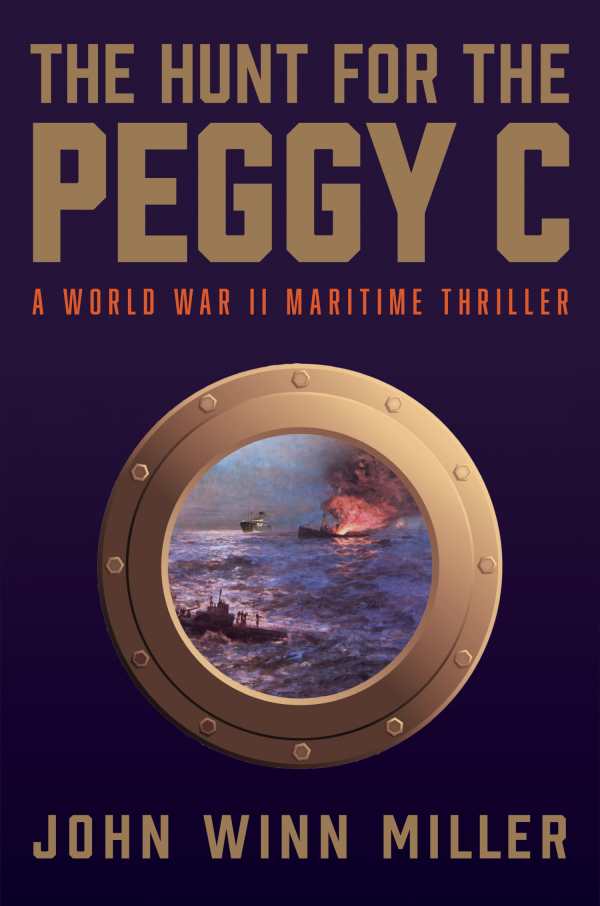The Hunt for the Peggy C
A World War II Maritime Thriller
Amid tragic losses and uncertainty, a honorable steamer captain and his crew prevail through wartime challenges in the historical thriller The Hunt for the Peggy C.
In John Winn Miller’s historical thriller The Hunt for the Peggy C, a tramp steamer captain evades a U-boat while transporting Jewish refugees.
Captain Rogers, an American, runs the Peggy C, one of the last steamers to carry cargo in the war-torn North Atlantic. He thrives on challenges: he rescues other sailors from frigid waters and steers away from threats. He calculates that continuing as a neutral merchant ship is viable, even two years into World War II.
The danger intensifies after a stop in Amsterdam. Accompanied by a dwindling crew of loyal old-timers, including his right-hand man, Obasi, and newer, less reliable recruits, Rogers accepts a perilous mission: to bring a rabbi, the rabbi’s niece, and others to Gibraltar and thus collect a significant reward. When a U-boat helmed by Captain Brauer sets chase, Rogers is forced to change course.
Maritime historical facts are woven into this story about the faltering Peggy C and U-boats, as is information about the practical inner workings of the ships. Rogers faces mechanical crises and wrangles his equipment while evading German “wolfpack” submarine tactics. As a result, the settings are immersive. And the interactions between members of Rogers’s crew are rich and entertaining; though they are at ease with one another, there are tensions too. The crew members are distinguished from one another by light background information. They take daring action during close calls. Captain Rogers evolves as a leader because of their trials—and because of his absorption of the rabbi’s story, which pushes him to reconsider his own rough reactions.
Miriam, the rabbi’s niece, is a vibrant secondary character. Her bravery, idealism, and doctoring skills garner Rogers’s notice. Their gradual conversations, which are sprinkled with references to novels, draw forth sharp facets of each other’s characters. Rogers’s taciturn nature is tempered by his observations of Miriam’s family’s faith; at the same time, she learns that there is more to the captain than she first thought.
However, some of the book’s connections are underdeveloped. Rogers’s initial response to the plight of the Jewish people is unsubtle: he witnesses injustices in Amsterdam and is “aghast,” but such sentiments stall. And many of the book’s German characters are dimensionless: they brandish weapons and are positioned as no more than familiar adversaries. Brauer is a typical blue-eyed Nazi; his roguish zeal masks his insecurities. One of the U-boat captives is an exception to this rule: he does not consider himself to be a Nazi, but his complicity is nonetheless evident.
The novel’s suspense increases thanks to the simmering threat of mutiny. Moving through unpredictable, dramatic twists, its tension is resolved via gripping action scenes and moments of sacrifice, helping to make The Hunt for Peggy C a riveting thriller about the risk that a steamer captain takes at sea for the sake of duty and love.
Reviewed by
Karen Rigby
Disclosure: This article is not an endorsement, but a review. The publisher of this book provided free copies of the book and paid a small fee to have their book reviewed by a professional reviewer. Foreword Reviews and Clarion Reviews make no guarantee that the publisher will receive a positive review. Foreword Magazine, Inc. is disclosing this in accordance with the Federal Trade Commission’s 16 CFR, Part 255.

